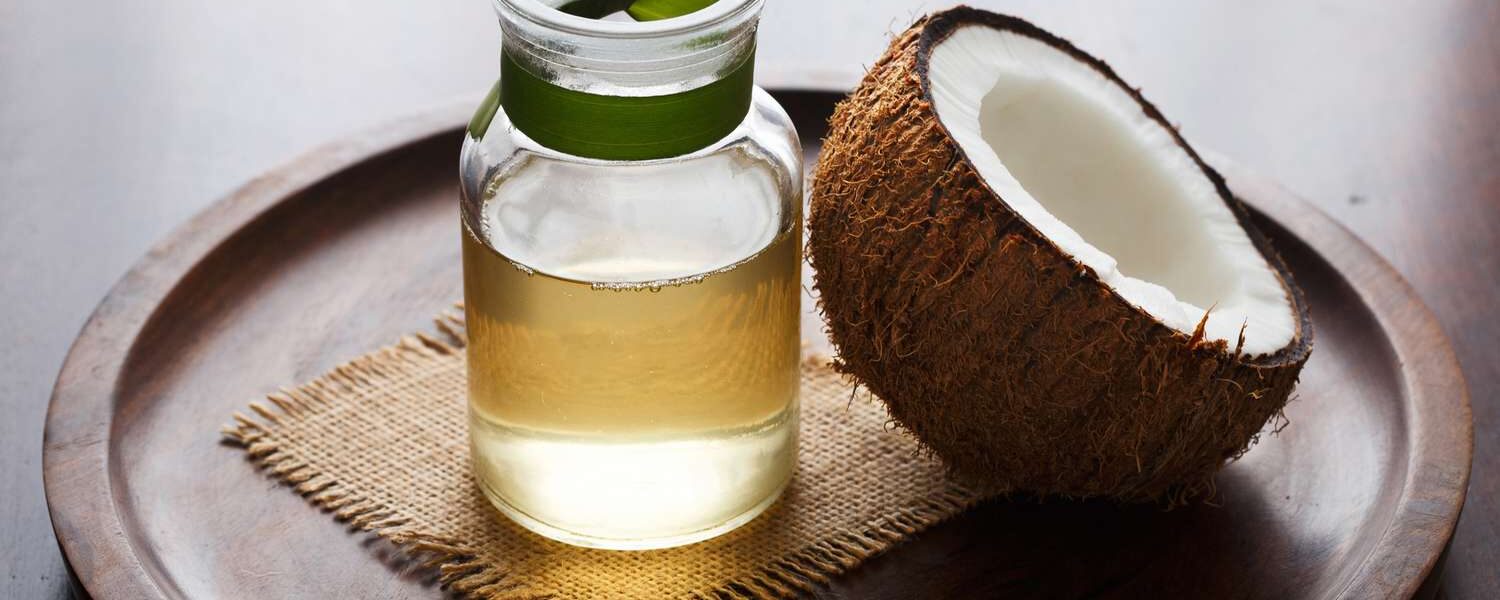Coconut oil (also called copra) is an oil that is extracted from the kernel (the white meat inside a coconut) of ripe coconuts. The scientific name of the coconut palm is Cocos nucifera. The coconuts are harvested from the coconut palm tree 10 to 12 months after the flower has been pollinated. It has numerous applications in the food, health, and beauty industries. The oil is contains about 90% saturated fat, 6% mono unsaturated fat, and 3% poly unsaturated fat.
It is edible, just like olive oil or almond oil. Unlike other unsaturated and saturated fats, it is made up of mostly medium-chain fatty acids (also called MCFAs). It is the new darling of the Internet generation, being hailed as a miracle oil. As its popularity grows, so do all the questions about it. For instance, how is it produced, what are the different types, what are its uses, how it should be stored, what are its benefits, what do the terms on the labels mean, and which ones should you buy?
We hope this article helps you to:
Understand the benefits and uses of this fantastic oil
Feel confident about consuming it
Decipher the wording used on the product labels
Understand the different production methods
Answer all your questions about it
12 benefits of coconut oil:
It has many reported benefits, from supporting normal body functions to maintaining healthy systems*
High in lauric acid, used in many medicinal products
Supports a normal metabolism*
Helps maintain normal blood glucose levels*
Supports a healthy heart*
Supports a healthy immune system*
Maintains normal digestion and nutrient absorption*
Hydrates the skin, improves skin tone and softness*
Reduces occasional and infrequent itching due to dry skin conditions*
Moisturizes hair and supports a healthy scalp*
High in antioxidants*
It is a source of quick energy, with a lower glucose spike than sugar*
14 uses for coconut oil:
Skin moisturizer
Key base ingredient in soap production
Improving the appearance of stretch marks
Massage oil for all types of massage
Make many homemade, natural recipes
Apply to dry hair to help with luster and frizz
Soothes sunburnt skin
Shave faces, legs, and armpits
Baby oil
Season cast iron skillets and frying pans
Safe for use on pets for same ailments
Carrier oil in aromatherapy
Sexual lubricant but not while using latex condoms
Oil pulling
Stability and storage of coconut oil
Coconut oil is very high in saturated fat, which makes it slow to turn rancid. All forms of the oil are stable at room temperature. This oil is more stable than other oils because it mainly contains medium chain fatty acids. These medium chain triglycerides (also called MCTs) are saturated fats. The oil’s appearance can change, depending on the temperature of the room. The oil is liquid above 76 degrees Fahrenheit, and will be a solid below that temperature. When the oil is solid, it is white and thick. When the oil is liquid, it is clear and easy to pour. The high saturated fat content makes coconut oil very stable in heat, meaning that it has a high smoke point and a high flash point.
The high saturated fat content also gives the oil a long shelf life. The temperature at which the solid oil becomes liquid is very near to room temperature. It is therefore very easy to change its form. You can melt coconut oil by applying a low heat source to it, even as subtle as the palm of your hand. You can solidify liquid coconut oil by placing it into a refrigerator. This oil is very stable, and can be stored in either its liquid or solid form. It does not need to be refrigerated, but should be protected from UV rays. Its shelf life can be many years long.





